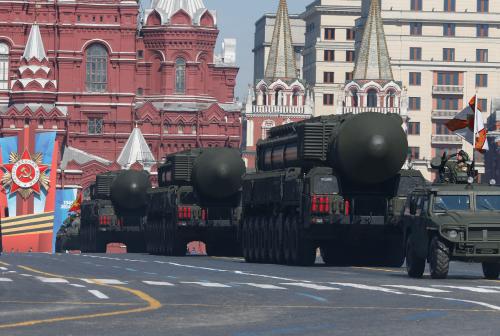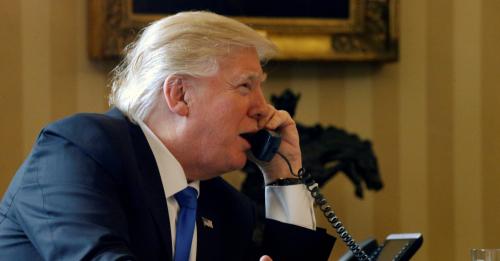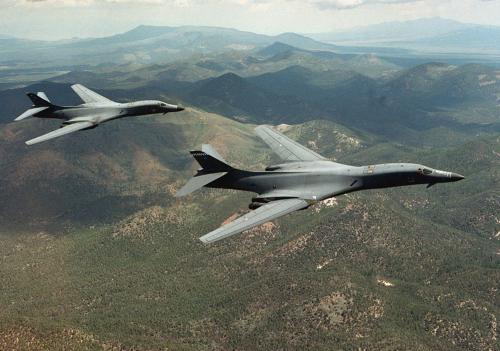First, full disclosure, I support Hillary Clinton for president. But it is not just Clinton supporters who get nervous when Donald Trump talks about nuclear arms. His reported comments about using nukes—for example, “If we had them, why can’t we use them?”—suggest the Republican presidential nominee does not appreciate just how consequential any use of a nuclear weapon would be. In last night’s debate with Clinton, Trump showed that he also does not know much about Russian and U.S. nuclear forces.
The balance
Trump raised the question of the U.S.-Russia nuclear balance with the following statement:
“Now, with that being said, she [Clinton] talks tough against Russia, but our nuclear program has fallen way behind and they have gone wild with their nuclear program. Not good. Our government shouldn’t have allowed that to happen. Russia is new in terms of nuclear and we are old and tired and exhausted in terms of nuclear. A very bad thing.”
Is the situation really that dire? According to the Department of Defense, the U.S. nuclear stockpile in September 2015 numbered 4,571 weapons, just about the number that the Federation of American Scientists estimates for the Russian stockpile. (No other country has more than 300.) When the 2010 New Strategic Arms Reduction Treaty takes full effect in 2018, the Pentagon plans to have 1,550 deployed strategic nuclear warheads, the same number that the treaty allows Russia.
Moscow does indeed have an active strategic nuclear modernization program underway. Russia is currently building new ballistic missile submarines, submarine-launched ballistic missiles (SLBMs) and intercontinental ballistic missiles (ICBMs). Russian officials suggest they may reopen the production line for the 25-year-old Blackjack bomber as well.
But has the Kremlin “gone wild?” Perhaps with its disturbing loose talk about nuclear weapons, but not so much when it comes to building strategic nuclear forces. Most of what the Russians are doing now is replacing old submarines and missiles. These are submarines and missiles that they would have replaced a decade ago had their defense budget been able to afford it. For example, over one-half of the warheads on Russian ICBMs sit atop missiles that were deployed about 30 years ago and are already well past their retirement dates.
The first new Borey-class ballistic missile submarine became operational in 2014. But the bulk of the Russian navy’s missile boats were built in the 1980s. Concern about their reliability is such that they usually perform deterrence patrols at dockside rather than venturing out to sea. (By contrast, one-third to one-half of the U.S. ballistic missile submarine force typically is at sea at any one time.)
Old vs new
So how “old and tired and exhausted” are U.S. strategic nuclear forces? Many U.S. strategic delivery systems indeed go back a number of years. The Minuteman III ICBM dates back to the 1970s and will remain operational until 2030. That’s because the U.S. Air Force made a choice to extend the life and modernize the Minuteman rather than buy a new missile.
“New” does not always translate to “better.” The U.S. Navy’s SLBM force, which carries most deployed U.S. strategic warheads, consists of Trident II D-5 missiles that were first deployed in the late 1980s. Trump might prefer the newer Russian Bulava SLBM, deployed in 2014. But the Bulava has failed in roughly half of its test flights. At the end of September, one of two Bulavas launched self-destructed. In the previous tests in November 2015, both Bulavas failed. By contrast, the Trident II D-5 has a record of more than 150 consecutive successful flights. Which missile would you want to equip your fleet with?
U.S. strategic modernization
Trump also misses the fact that the Russian and U.S. strategic modernization programs are not proceeding at the same time. They rarely have. Yes, Russia is building a lot now. Flash forward 10 years, however, and the Russian modernization program will be largely complete. On the U.S. side, on the other hand, the Pentagon plans in the mid-2020s to be building new ballistic missile submarines, ICBMs, stealth bombers, and nuclear-armed cruise missiles—all under a program approved by the Obama administration. Many question whether the Defense Department’s budget can afford all of that, or whether it is all necessary, but no knowledgeable expert doubts that U.S. strategic forces will shortly be undergoing a substantial update.
Trump’s nuclear comparison was simplistic and off the mark. Russia tends to build more than does the United States. That reflects the fact that U.S. strategic nuclear systems are built to last longer, sometimes much longer, than their Russia counterparts. It also reflects a Pentagon design choice to take a system, such as the Minuteman ICBM or B-52 bomber, and modernize it over time rather than replace it.
This has been the case for U.S. strategic forces for decades. And, if the situation is all that bad, could Trump name a single serving U.S. general or admiral who would be willing to trade U.S. strategic forces for Russia’s?







Commentary
The Donald shows again he doesn’t understand much about nukes
October 10, 2016